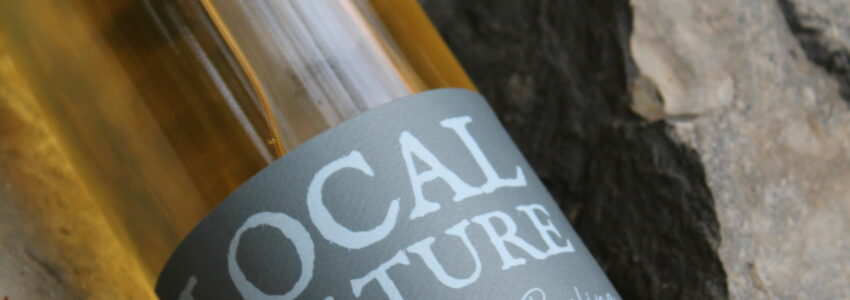Ferment to be Wild – Local Culture 2021 Dry Riesling

The inspiration behind the series from our Winemaker.
Somewhere in 2020, I decided I needed to learn how to make wine by feeling alone. It was the culmination of a few years of feeling like my approach to the craft was getting stagnant. Sure, we were making decent wines, but they just didn’t seem to have the depth I was chasing. When I first got into this, I was animated by a sense of wonder that seemed to be eroding as I gained an understanding of the mechanics of wine. I was itching to push boundaries, but the nuts and bolts of our winemaking strategy said otherwise. Something had to give, so that vintage we made our first real attempt at indigenous fermentation and low-intervention winemaking. It was both terrifying and exhilarating. I was hooked.
Winemaking in such a wide-open style seemed like exactly what I needed to put the wonder back into my work, but it didn’t come without its challenges. Mostly, it challenged the way I thought about wine and the belief system that I’d built up over the first decade-plus of my career. Concepts I’d accepted as truths were suddenly on the table for debate, and it was time for me to really start evaluating them on my own. So many times in wine, an objective fact is blindly coupled with a subjective value, judgment. I had to break that loop.
Heading into 2021, I doubled down. Armed with new ideas about how to make indigenous fermentations more successful and some new toys in the cellar, I dove into the deep end of the pool without a second thought. Given the conditions Mother Nature was about to present, I probably should have been more measured.
The 2021 vintage in the Finger Lakes was a historically challenging one. With rain and rot prevalent through harvest, it made for a harrowing journey from vine to bottle. The condition of the fruit we sourced wasn’t what we wanted, but nobody’s was and there wasn’t anything anybody could do about it. We pressed forward.
At the beginning of the season, we started a pied de cuve wild yeast culture that we used throughout harvest, enabling us to pursue indigenous ferments broadly. Unfortunately, the conditions in the vineyards that year meant that many of our grapes were pursuing indigenous fermentations of their own by the time they arrived on our crush pad. For white wines, where a juice settling step is typical prior to fermentation, this is a major complicating factor. Even on wines where we pursued a more conventional approach, the established toolkit of additives and techniques wasn’t doing what we needed to get our juices clean. On our low-intervention wines, it was nearly impossible.
Containing Riesling from every grower we worked with in 2021, this wine started as a combination of tough-to-settle juices. Co-fermented in concrete amphora with the aforementioned pied de cuve, the wine did what wines made from unsettled juice often do: it displayed off aromas and rough texture. Wanting to address this by feel, I opted to push the winemaking in an oxidative direction, limiting sulfite use and taking opportunities to dissolve oxygen into the wine. My hope was that the aromas would wake up and the texture would soften. In reality, I was creating perfect conditions for one of the most polarizing microbes in the wine world: Brettanomyces.
Admittedly, when I started to smell clove and smoke in this wine, I panicked. This felt like an oops on a grand scale and I didn’t know what to do about it. What shook me, even more, was that I really liked the way the wine was tasting. While I could agree that Brettanomyces was present, I wasn’t convinced that it was bad. Do we not enjoy wines with Brett because they’re gross, or is it because we’re trained to think they’re gross? I’m not sure there’s a satisfying answer to that question, but I think it’s worth asking.
This Riesling is polarizing, mostly because it’s totally unique in an unexpected way. Textured but electric, with smoky, savory edges, it doesn’t immediately say “Finger Lakes Dry Riesling,” but maybe that’s why I love it. It’s forced me to rethink paradigms and restored a sense of wonder about my work, even if the wonder is just wondering what I might approach differently if confronted with a similar situation in the future. In that respect, it couldn’t be better. It’s not without flaws, but it’s deep, complex, and likely the most provocative wine we’ve ever made. We’re not all the way to making wine by feel alone just yet, but this wine is a step in the right direction.
